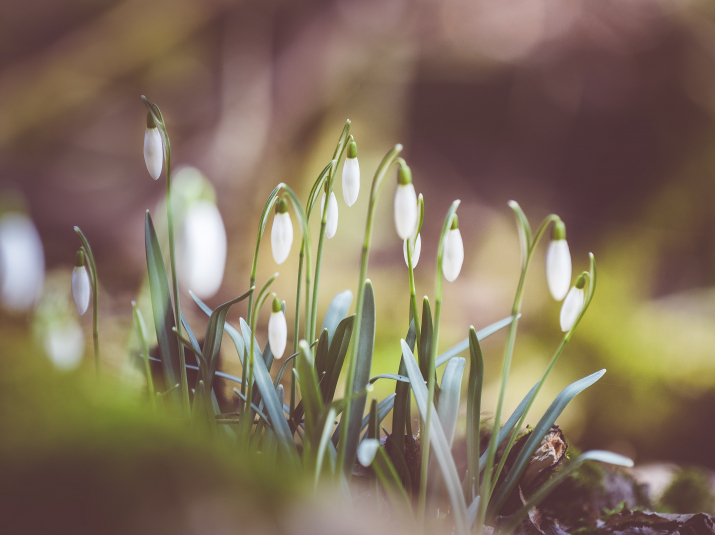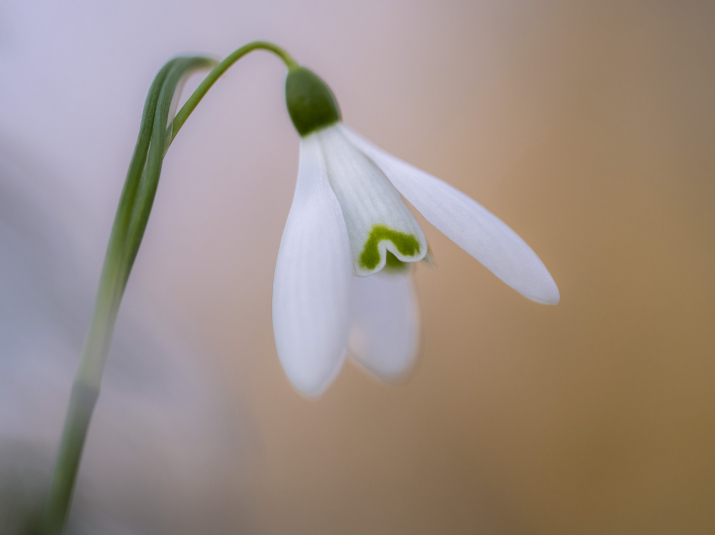With long, fine leaves and drooping, bell-shaped flowers, the snowdrop’s delicate structure makes it perfect for close-up shots, where you’re creating a very shallow depth of field that isolates the plant against a beautifully defocused background with dreamy bokeh. This is easily achieved with a macro lens, such as the 40mm or 85mm Micro DX, or the 60mm or 105mm Micro if you’re shooting full frame. Alternatively, use the long end of a telephoto as physically close as you can get without going beyond its close-focusing distance.
Your aim with close-ups is to keep the camera as still as possible. You can shoot handheld, especially if you’re using a VR lens with inbuilt vibration reduction , while the new Z series cameras actually build that stabilisation into the sensor allowing you to achieve even lower shutter speeds when handholding the camera.
For absolute belt and braces, use a tripod with the leg low to the ground to get the camera as low as possible, so you’re shooting from the flower’s “eye view”. A beanbag is a great alternative – inexpensive, portable and enabling you to position the camera even closer to the ground. To further minimise the risk of blurring when the shutter fires, use a remote release or exposure delay mode to reduce the risk of camera shake when the shutter fires.
When you’re shooting close to the ground, compose and check focus in Live View – it’s far more comfortable than trying to squint through the viewfinder. You can also take advantage of the tilting LCD screen if you camera has one one. To ensure critical sharpness in a close-up, use the + magnification button to zoom in to the LCD screen on a the critical area of the frame you want to be pin sharp , and now use autofocus or manual focus to bag it. Alternatively, on your Z series camera, choose Focus Peaking or Pinpoint Focusing.
You can find more macro tips from Nikon School here.


